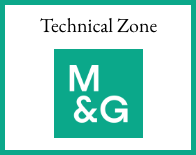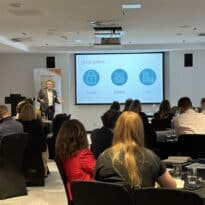Understanding what AI isn’t is just as important as understanding what it is, says Jim Logan, senior vice president, Silent Eight
I’ve been working in the financial services space for close to thirty years now. I’ve seen many trends and technologies emerge. Some take hold, several are just a flash in the pan. Regardless of how long a concept sticks around, one thing remains: Terminology plays a material role in shaping perceptions. In a world where messaging tends to over complicate things, too many acronyms, and too many buzzwords all work against what should be the primary objective: clearly illustrating value. I’ve found this to be equally true when it comes to artificial intelligence or ‘AI’.
Generally speaking, the word artificial doesn’t readily call to mind a positive image, does it? By definition, the word “artificial” has listed meanings of, “insincere or affected” and “made by humans as opposed to happening naturally.” It is the second part of this definition I’d like to explore a bit further.
Artificial Intelligence is, in fact, created by humans. And it isn’t a new fad or concept. Many don’t realize that the term was first coined by John McCarthy, Ph.D. and Stanford computer and cognitive scientist, back in 1955. AI has continued to evolve as a material concept, with practical applications across many industries, ever since.
For financial service professionals, particularly those of us involved with fighting financial crime and preventing money laundering, AI can have a tremendous impact and practical application. Before we dive a bit deeper, I feel it’s important to first understand what AI isn’t.
AI is not intended to simply be a digital worker, certainly not within financial services and fighting financial crime. Yes, AI can automate various functions. We’re all familiar with the concept of ‘bots’ and virtual assistants. However, those are rudimentary examples of robotic process automation. True AI is human-led and a continuous, instantaneous learning process that drives tangible value. AI is not merely a play to cut costs or replace human capital. Rather, AI enhances the bottom line by keeping compliance staff costs flat in the immediate term and enables our human experts to more appropriately manage their time, by focusing talent on investigations that matter the most.
One of the most valuable aspects of AI, in the context of anti-money laundering and compliance, is the speed by which it can be deployed. We’re talking about time to market and time to value in a matter of weeks. Not months, not multiple quarters – simply weeks. But I don’t mean a generic, black box concept. I’m specifically referring to a highly precise, tailored AI solution that has extensive proof points and, more importantly, far-reaching global regulatory approval.
AI shouldn’t simply be an extension of legacy rules-based routines, nor a way to further automate the process of scoring or risk-weighted alert suppression. That simply dilutes the true value of AI, and does not maximize the cost and efficiency benefits.
The cost of compliance continues to grow at a staggering pace, particularly for financial institutions and insurance companies. Equally of concern, the impact of fines for non-compliance has also skyrocketed in the last decade. Specifically to the tune of $8.4 billion last year across North America alone.
What if you could literally solve every single name screen, sanction, and transaction alert? What if you could achieve this without sacrificing any aspect of control and security? What if you could increase the throughput, efficiency and accuracy of your compliance operations without adding a single dollar of staff expense to your budget?
Let’s stop talking in terms of what if and have a meaningful conversation regarding how. I’m helping clients achieve all of these measures today and that is from a perspective proven in production. Here at Silent Eight we’re a team founded by engineers and data scientists, solving real world challenges in the anti money laundering and financial compliance market.
Artificial Intelligence isn’t scary…it isn’t a black box…and it isn’t the futuristic world of tomorrow – it is the here and now, and it’s battle tried and tested.


































